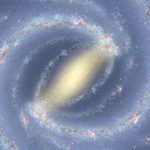Scientists unlock the power of electron spin for future quantum technologies
Scientists at Lawrence Berkeley National Laboratory have made a significant breakthrough in the field of quantum information science, demonstrating a new way to use...
Tauonium: The tiny atom that could unlock big secrets of the universe
Once considered the simplest of all, the hydrogen atom consists of a proton and an electron.
However, recent scientific advances have revealed even simpler atoms...
Scientists discover new property of light in silicon
Researchers from the University of California, Irvine, along with their colleagues at Kazan Federal University in Russia, have made an exciting breakthrough that sheds...
Scientists pave new path to explore quantum aspects of gravity
Gravity is a force we all experience daily, but its fundamental nature remains a mystery.
While Einstein’s theory of relativity suggests gravity is a force...
Scientists unlock the “entropy” of quantum entanglement
In a groundbreaking study, scientists Bartosz Regula from the RIKEN Center for Quantum Computing and Ludovico Lami from the University of Amsterdam have demonstrated...
MIT scientists pioneer a technique to place atoms closer than ever, expanding quantum possibilities
Physicists at MIT have made a significant breakthrough in the field of quantum physics by developing a new method that allows atoms to be...
Scientists reveal new device to enhance quantum computing efficiency
In a significant advancement for quantum computing, researchers at the University of Massachusetts Amherst, along with their colleagues from the University of Chicago, have...
MIT physicists discover new way to create strange metal
In an exciting development at MIT, physicists have found a new method to create a state of matter known as a "strange metal."
This discovery...
New evidence supports the existence of dark matter in the universe
Scientists are diving deep into one of space’s biggest mysteries: dark matter.
This invisible substance isn't something we can see directly, but many experts believe...
Galaxies evolved surprisingly quickly in the early universe
Anyone familiar with astronomy will know that galaxies come in a fairly limited range of shapes, typically; spiral, elliptical, barred-spiral and irregular.
The barred-spiral galaxy...









